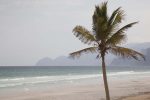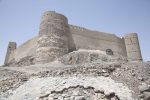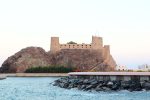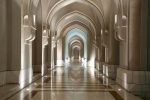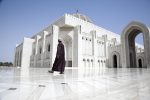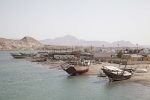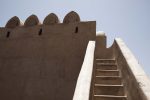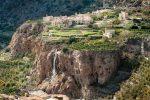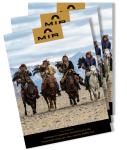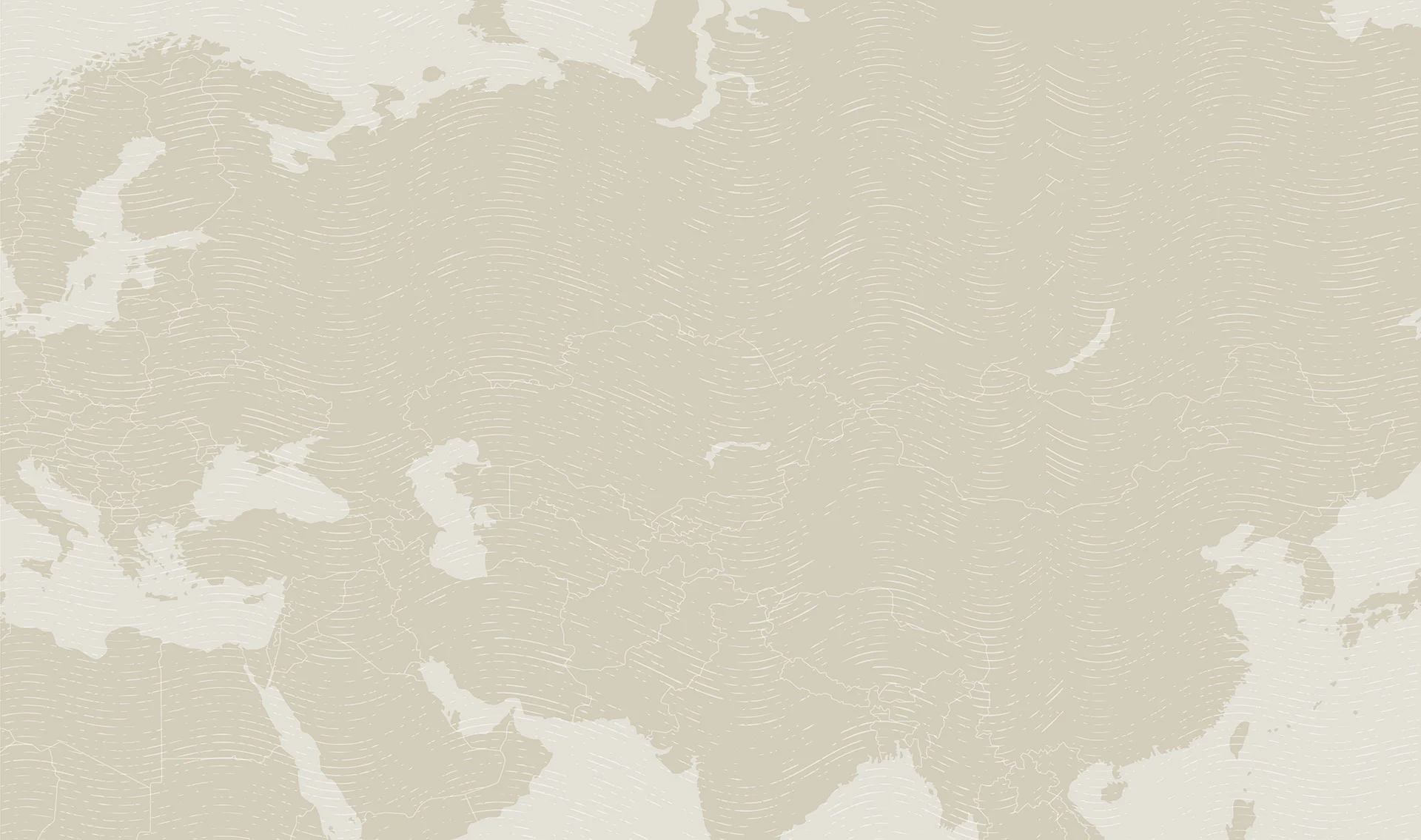UAE & Oman: Culture & Contrast in the Middle East
Mosques to Markets & Skyscrapers to Sand Dunes
Overview
Welcome to the United Arab Emirates and Oman—neighboring countries of the eastern Arabian Peninsula where deeply rooted traditional culture and futuristic splendor exist in remarkable, sometimes surreal harmony. This tour starts with the opulence and bravado of Dubai, a city bent on having the biggest and best of everything, and then introduces you to the region’s more time-honored attractions, from the charming port city of Muscat to the brilliant night sky over Wahiba Sands. Along the way you’ll get to know the region’s gregarious people and have one-of-a-kind experiences—from sharing a meal with an expert in Emirati culture, to meeting a Bedouin family in the dunes of Oman, to exploring remote villages and forts in the Al Hajar Mountains.
Extend your adventure with an optional small group post-tour to the Dhofar Governate of Oman. The regional capital Salalah sits along the coast of the Arabian Sea with Dhofar Mountains rising behind. These mountains trap fog and drizzle during the summer monsoons, creating a unique microclimate.
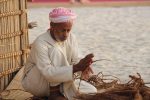
Map
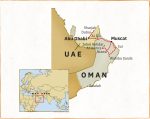
Itinerary
-
Days 1-3: Dubai (UAE), Sharjah

Touch down in Dubai and begin exploring this city of superlatives. Spend time in the Al Fahidi Historical District, home to Persian-inspired windcatchers. Enjoy lunch and learn from an expert on local culture at the Sheikh Mohammed Centre for Cultural Understanding. Head across the Dubai Creek on an abra boat and stroll through the souqs on the opposite side. You’ll ascend to the observation deck of Burj Khalifa, the tallest building in the world. Finally, a day trip to Sharjah, the UNESCO Cultural Capital of the Arab World, provides a deep dive into traditional culture on the Arabian Peninsula.
HIGHLIGHTS
- Cross the historic Dubai Creek in a local abra boat
- Have lunch in the Al Fahidi Historical Neighborhood at the Sheikh Mohammed Centre for Cultural Understanding, where locals share traditional food and provide insights into Emirati culture
- Take the 2,717-foot elevator ride to the Burj Khalifa observation deck and then step out to spectacular 360-degree views
- Explore the traditional gold, spice, and produce markets (souqs) of Dubai and Sharjah
-
Days 4-5: Abu Dhabi, Al Ain

Like Dubai, Abu Dhabi—the UAE’s capital—has transformed itself over the past half-century into a thriving, cosmopolitan city. Touring here includes the Louvre Abu Dhabi, the Sheikh Zayed Grand Mosque, and the Qasr Al Watan Presidential Palace. You’ll refuel with a 24-carat-gold-sprinkled cappuccino at a luxurious hotel, the Emirates Palace. Heading out of the UAE and into Oman, stop off at the historic oasis city of Al Ain, home to multiple UNESCO World Heritage Sites.
HIGHLIGHTS
- Enjoy the exceptional art of the Louvre Abu Dhabi, including pieces on loan from Paris’s Louvre, Musee d’Orsay, and Centre Pompidou, as well as works from the museum’s own collection
- Marvel at the striking mix of modern and traditional design at the Sheikh Zayed Grand Mosque, the largest mosque in the UAE and the only one in Abu Dhabi open to non-Muslims
- Drink a cappuccino sprinkled with 24-carat-gold dust at the luxurious Emirates Palace
- Stroll the picturesque “Garden City” of Al Ain, a former caravan oasis and birthplace of the UAE’s founding father, Sheikh Zayed Al Nahyan, whose palace is now a museum
-
Days 6-8: Muscat (Oman), Sur

Muscat, the capital of Oman, is a major port city that has long been a conduit between the Arabian Peninsula to the rest of the world. Less glitzy but more charming than Dubai, Muscat is known for its historic bazaars, traditional whitewashed architecture, and old-school Arabian hospitality. Among your stops here are the Mutrah Souq, the National Museum of Oman, and the Sultan Qaboos Grand Mosque. Learn more about the role of women in modern Omani society at a local sewing cooperative. A drive along the water takes you to Wadi Tiwi, a deep gorge that’s among Oman’s most beautiful natural sights, and the coastal town of Sur, from where you’ll go on a turtle-watching expedition at Ras Al Jinz Reserve.
HIGHLIGHTS
- Take in the timeless Arabian vistas of old Muscat and the handicraft-filled Mutrah souq
- Explore the history and heritage of Oman at the well-curated National Museum, with exhibits focusing on the country’s maritime history, currency, irrigation systems, Islam, and much more
- Learn about the role of women in modern Omani society at the Sidab Women’s Sewing Cooperative
- Drive past spectacular wadis (gorges) and pristine beaches en route to Sur
- Watch sea turtles serenely emerge from the Arabian Sea to nest at the Ras al Jinz Reserve
-
Days 9-11: Sur, Wahiba Sands, Jebel Akhdar

Finish off the coastal section of the tour by watching traditional dhows being built in the Sur shipyard, followed by a visit to the Sur Maritime Museum. Then head inland for an exhilarating drive into Wahiba Sands, where you’ll meet Bedouins who call the desert home. The next day, travel into the Al Hajar Mountains to Jebel Akhdar, which means “Green Mountain” in Arabic. Take in spectacular views, meet locals, and hike through timeless villages.
HIGHLIGHTS
- See how traditional Omani dhows are constructed at Sur’s shipyard, and learn more about the maritime history of the area at a local museum
- Chat with a Bedouin family and learn about their culture and traditions amidst the stark and boundless Wahiba Sand Dunes
- Experiencing the vast beauty and limitless stars of the desert at night, while bedding down in a well-appointed, air-conditioned chalet
- Hike between villages on the slopes of Jebel Akhdar in the Al Hajar Mountains, one of the most rugged and spectacular landscapes on the Arabian Peninsula
-
Days 12-14: Al Hamra, Nizwa, Muscat

From Jebel Akhdar continue your exploration of Oman’s interior, settling in for two nights in Al Hamra, a date palm-studded village near history-rich Nizwa. This welcoming and traditional area is as dedicated to heritage as Dubai is to modernity. Explore forts and castles and wander the souq and livestock market in Nizwa. Eschewing the highway, return to Muscat by way of a scenic and very remote stretch of mountains, including some time on unpaved roads. Enjoy a final night in the city before departure the following morning.
HIGHLIGHTS
- Learn about the history of the Nizwa Imamate as you explore its historical capital
- Wander the ramparts and corridors of the Ya’rubid Jibreen Castle, surrounded by date palms in the desert near Bahla and Nizwa
- Marvel at the hustle and bustle of the souq and Friday livestock market in Nizwa
- Get a taste of Oman before the oil boom on remote mountain backroads linking the Al Hamra with the capital Muscat
Dates & Prices
Small group tour – max 16 travelers
Land tour price, per person. Based on double occupancy and minimum group size of 6 travelers.
Call for dates and prices
What's Included
-
Tour Includes
- Accommodations, as noted in the itinerary.
- Most meals, as noted in the itinerary.
- A daily supply of bottled water.
- Arrival/departure airport transfers on the tour start/end date. MIR will arrange for all travelers to be met upon arrival and seen off upon departure whether or not we make your flight arrangements.
- Ground transportation throughout tour by private van or coach. (Type of vehicle depends on group size.)
- Services of experienced, English-speaking local guides, drivers, and other staff, including a MIR Tour Manager.
- Guided sightseeing tours and entrance fees, as outlined in the itinerary.
- Special events, excursions, and cultural performances, as outlined in the itinerary.
- Gratuities to local guides, drivers, and other service personnel, including servers at group meals.
- Complete pre-departure electronic document that includes detailed packing suggestions, reading list links, country-specific information, maps, travel tips and more.
- Assistance booking your custom flight arrangements, on request. (Please note, international airfare is not included in the land tour cost.)
- Customized visa information and instructions. (Please note, visa fees are not included in the tour price.)
- Electronic final update bulletin, with any late news, updates and important information.
-
Not Included
- International airfare and taxes/fuel surcharges.
- Internal airfare. (Internal airfare is quoted separately and subject to change by airlines.)
- Meals and drinks not specified as included in the itinerary.
- Single supplement (or partial single supplement where applicable), if requested or required.
- Gratuities to Tour Manager.
- Expenses incurred as a result of delay, modification, or extension of a tour due to causes beyond MIR’s control.
- Travel insurance, including cancellation, medical, and evacuation insurance.
- Visa and/or passport fees, excess-baggage charges, airport departure taxes, vaccination and other medical costs.
- Items of a personal nature, such as phone calls, email, laundry, and alcohol.
- Optional pre- or post-tour extensions.
Activity Level
-
Level 3: Medium
Level 3: Medium
This small group tour features long days walking and standing while touring, several long days of overland travel (some on poor quality roads), lengthy foot traverses of two border points while carrying/rolling your own luggage, unpaved sidewalks and streets, uneven surfaces and steps, absent handrails, significant stair-climbing, and absence of elevators. Only those fit to travel and who are willing to accept local standards of amenities and services, and the physical challenges, should consider joining this program.
Travelers must be able to walk at least two miles a day, keeping up with fellow travelers. A few drives on poor-quality roads may last as long as 8-10 hours driving time (with comfort stops). Some border crossings may require walking up to about a half-mile while managing your own baggage; and in some cases, bags may need to be carried during these crossings rather than rolled, as the road/sidewalk surface is not always paved or smooth.
There are overall shortcomings in the tourism infrastructure of these developing destinations, including some that can cause walking challenges such as unpaved sidewalks, uneven surfaces and steps, packed-dirt streets, broken pavement (streets or sidewalks), and a general absence of handrails or ramps. Some attractions are only accessible via steep staircases with tall uneven steps – these can also be spiral staircases and/or in narrow passages with limited light. Elevators are not available at touring sights, nor at a few of the hotels.
Past travelers have also encountered challenges with plumbing, bureaucratic service, variety of locally available foods, and availability and quality of public restrooms.
Accommodations vary from four and five star properties to relatively basic and simple hotels in the more remote cities.



